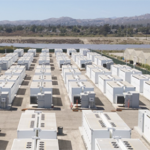Has a nice sound to it: renewable energy resources capturing a 22% share of the generation mix in 2022…
Electricity generation from renewable sources, such as hydropower, wind, and solar, accounted for 20% of electricity generation both in 2020 and in 2021. Now, the Energy Department’s Energy Information Administration (EIA) said it expects that share to rise to 22% in 2022 and to 24% in 2023.
The growth comes as more generating capacity from wind and solar come online and as other generation sources, such as coal and nuclear, are retired.
The two regions with the largest shares of renewable electricity generation during 2021 were the Northwest, where renewables accounted for half of the region’s electricity generation, and California, where renewables accounted for 44% of regional electricity generation. Both of these regions’ hydropower resources were constrained by droughts in 2021, but they still increased their renewable shares of electricity generation.
The Southwest Power Pool (SPP) region has had the most growth in the renewable share of electricity generation over the past decade, largely due to wind generation. EIA said that in 2013, 13% of the region’s electricity generation came from renewables. That share increased to 40% in 2021, and EIA said it expects the share to rise to 44% in 2022.
The Electric Reliability Council of Texas, or ERCOT, also increased its renewable share, from 10% in 2013 to 32% in 2022. EIA said that ERCOT is the only electricity market region where the renewable electricity share has transitioned from less than the U.S. average to more than the U.S. average from 2013 to present. Both SPP and ERCOT have added substantial generating capacity from wind turbines. Earlier this year, output from wind turbines in SPP and ERCOT contributed to wind becoming the second-highest source of electricity generation on a single day (March 29).

Data source: U.S. Energy Information Administration, Short-Term Energy Outlook (STEO)
EIA said the share of electricity generation from renewable sources is lowest in three regions along the U.S. East Coast: the PJM Interconnection in the Mid-Atlantic, the Southeast (identified as SERC Reliability Corporation), and the Florida Reliability Coordinating Council.
In each of those regions, EIA said it expects the renewable share of electricity generation to remain below half of the national average through 2023. Natural gas and nuclear sources provide most of the electricity generation in the Southeast and Florida. In PJM, the prevalent generation sources have been natural gas and coal.
In Apri, EIA said that electric power sector generation from renewable sources totaled 795 million MWh in 2021, surpassing nuclear generation, which totaled 778 million MWh.
Natural gas remained the most prevalent source of energy used in electricity generation, accounting for 1,474 million MWh in 2021. And, although several coal-fired power plants retired during the year, coal-fired electricity generation increased in 2021 for the first time since 2014 and was the source of more electricity than either renewables or nuclear power.









































